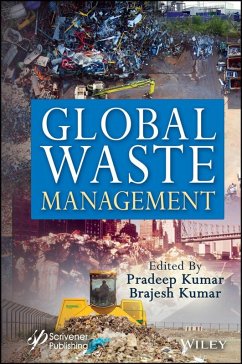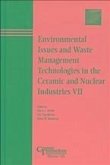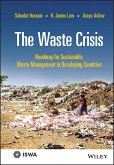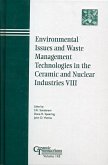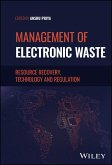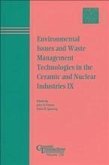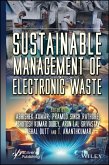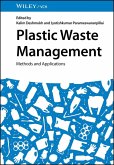Global Waste Management (eBook, PDF)
Redaktion: Kumar, Pradeep; Kumar, Brajesh
187,99 €
187,99 €
inkl. MwSt.
Sofort per Download lieferbar

0 °P sammeln
187,99 €
Als Download kaufen

187,99 €
inkl. MwSt.
Sofort per Download lieferbar

0 °P sammeln
Jetzt verschenken
Alle Infos zum eBook verschenken
187,99 €
inkl. MwSt.
Sofort per Download lieferbar
Alle Infos zum eBook verschenken

0 °P sammeln
Global Waste Management (eBook, PDF)
Redaktion: Kumar, Pradeep; Kumar, Brajesh
- Format: PDF
- Merkliste
- Auf die Merkliste
- Bewerten Bewerten
- Teilen
- Produkt teilen
- Produkterinnerung
- Produkterinnerung

Bitte loggen Sie sich zunächst in Ihr Kundenkonto ein oder registrieren Sie sich bei
bücher.de, um das eBook-Abo tolino select nutzen zu können.
Hier können Sie sich einloggen
Hier können Sie sich einloggen
Sie sind bereits eingeloggt. Klicken Sie auf 2. tolino select Abo, um fortzufahren.

Bitte loggen Sie sich zunächst in Ihr Kundenkonto ein oder registrieren Sie sich bei bücher.de, um das eBook-Abo tolino select nutzen zu können.
Global Waste Management raises awareness among readers about industrial application-based problems by encouraging self-evaluation and verification processes related to waste creation and its minimization. While other books discuss the "Do's and Don'ts" of waste-related issues, our aim is to inspire readers to brainstorm solutions by providing appropriate data integrated with human values.
This outstanding new volume highlights the relationship between human activities and their effects on ecology and the environment in the form of waste, including e-waste, industrial waste, radioactive…mehr
- Geräte: PC
- mit Kopierschutz
- eBook Hilfe
- Größe: 36.13MB
Andere Kunden interessierten sich auch für
![Environmental Issues and Waste Management Technologies in the Ceramic and Nuclear Industries VII (eBook, PDF) Environmental Issues and Waste Management Technologies in the Ceramic and Nuclear Industries VII (eBook, PDF)]() Environmental Issues and Waste Management Technologies in the Ceramic and Nuclear Industries VII (eBook, PDF)112,99 €
Environmental Issues and Waste Management Technologies in the Ceramic and Nuclear Industries VII (eBook, PDF)112,99 €![The Waste Crisis (eBook, PDF) The Waste Crisis (eBook, PDF)]() Sahadat HossainThe Waste Crisis (eBook, PDF)96,99 €
Sahadat HossainThe Waste Crisis (eBook, PDF)96,99 €![Environmental Issues and Waste Management Technologies in the Ceramic and Nuclear Industries VIII (eBook, PDF) Environmental Issues and Waste Management Technologies in the Ceramic and Nuclear Industries VIII (eBook, PDF)]() Environmental Issues and Waste Management Technologies in the Ceramic and Nuclear Industries VIII (eBook, PDF)112,99 €
Environmental Issues and Waste Management Technologies in the Ceramic and Nuclear Industries VIII (eBook, PDF)112,99 €![Management of Electronic Waste (eBook, PDF) Management of Electronic Waste (eBook, PDF)]() Management of Electronic Waste (eBook, PDF)177,99 €
Management of Electronic Waste (eBook, PDF)177,99 €![Environmental Issues and Waste Management Technologies in the Ceramic and Nuclear Industries IX (eBook, PDF) Environmental Issues and Waste Management Technologies in the Ceramic and Nuclear Industries IX (eBook, PDF)]() Environmental Issues and Waste Management Technologies in the Ceramic and Nuclear Industries IX (eBook, PDF)112,99 €
Environmental Issues and Waste Management Technologies in the Ceramic and Nuclear Industries IX (eBook, PDF)112,99 €![Sustainable Management of Electronic Waste (eBook, PDF) Sustainable Management of Electronic Waste (eBook, PDF)]() Sustainable Management of Electronic Waste (eBook, PDF)173,99 €
Sustainable Management of Electronic Waste (eBook, PDF)173,99 €![Plastic Waste Management (eBook, PDF) Plastic Waste Management (eBook, PDF)]() Plastic Waste Management (eBook, PDF)133,99 €
Plastic Waste Management (eBook, PDF)133,99 €-
-
-
Global Waste Management raises awareness among readers about industrial application-based problems by encouraging self-evaluation and verification processes related to waste creation and its minimization. While other books discuss the "Do's and Don'ts" of waste-related issues, our aim is to inspire readers to brainstorm solutions by providing appropriate data integrated with human values.
This outstanding new volume highlights the relationship between human activities and their effects on ecology and the environment in the form of waste, including e-waste, industrial waste, radioactive waste (generated during medical treatment and diagnosis, the refining of radioactive materials, operations of nuclear power plants, and through weapons of mass destruction), and micro- and macro-plastic waste. Specifically targeting higher education levels-those teaching, studying, or conducting research on waste generated through various sources-this volume covers the outcomes of waste generation and its management. It draws on the experiences, practices, teachings, and leadership of academia, industry experts, process plant engineers, and researchers.
This book is a collective effort to provide essential information on values and ethics, case studies, and the implementation of regulations from national and international governing bodies related to waste and the environment. It offers plausible solutions for the significant amounts of waste generated annually by the sectors mentioned.
This outstanding new volume highlights the relationship between human activities and their effects on ecology and the environment in the form of waste, including e-waste, industrial waste, radioactive waste (generated during medical treatment and diagnosis, the refining of radioactive materials, operations of nuclear power plants, and through weapons of mass destruction), and micro- and macro-plastic waste. Specifically targeting higher education levels-those teaching, studying, or conducting research on waste generated through various sources-this volume covers the outcomes of waste generation and its management. It draws on the experiences, practices, teachings, and leadership of academia, industry experts, process plant engineers, and researchers.
This book is a collective effort to provide essential information on values and ethics, case studies, and the implementation of regulations from national and international governing bodies related to waste and the environment. It offers plausible solutions for the significant amounts of waste generated annually by the sectors mentioned.
Dieser Download kann aus rechtlichen Gründen nur mit Rechnungsadresse in D ausgeliefert werden.
Produktdetails
- Produktdetails
- Verlag: John Wiley & Sons
- Seitenzahl: 437
- Erscheinungstermin: 27. Dezember 2024
- Englisch
- ISBN-13: 9781394318407
- Artikelnr.: 72710561
- Verlag: John Wiley & Sons
- Seitenzahl: 437
- Erscheinungstermin: 27. Dezember 2024
- Englisch
- ISBN-13: 9781394318407
- Artikelnr.: 72710561
- Herstellerkennzeichnung Die Herstellerinformationen sind derzeit nicht verfügbar.
Pradeep Kumar, PhD, is an assistant professor in the Department of Chemical Engineering at IET Lucknow, India. He is also the Associate Dean for Undergraduate Studies and Value Education at AKTU, India, with around 20 years of teaching and research experience in various government organizations. An expert in polymer composites and separation processes, he has published more than 25 articles in reputed journals and books, along with five book chapters. Brajesh Kumar, PhD, is an assistant professor in the Department of Chemical Engineering at NIT Srinagar, India. He has over ten years of research and teaching experience in academic institutions and five years of teaching experience in various government institutions. He has published 11 journal articles, seven book chapters, and has presented papers at five international conferences.
Preface xix
Section 1: Global Waste Scenario 1
1 Waste Utilization for Sustainable Development 3
Pradeep Kumar
1.1 Introduction 4
1.2 Waste Utilization 6
1.2.1 Methods of Waste Utilization 7
1.3 Circular Economy 9
1.4 Waste Utilization in Practice 12
1.5 Conclusion 13
References 14
2 Waste: Challenges and Opportunities 15
Brajesh Kumar
2.1 Introduction 15
2.2 Waste as a Challenge 18
2.3 Waste as Opportunity 20
2.4 Conclusion 25
References 26
3 E-Waste: A Leading Hazardous Waste 31
Abhishek Kumar Chandra, Wasim Khan, Arun Kumar Gupta, Praveen Bhai Patel
and Ramendra Singh Niranjan
3.1 Introduction 32
3.2 E-Waste: Classification 34
3.3 Generation Scale 38
3.4 Classification of E-Waste 39
3.5 Necessity for E-Waste Management 42
3.6 Rules for Managing E-Waste 50
3.7 Challenges of E-Waste Management 56
3.8 E-Waste Trends and Recycling in Four Key Indian Cities 56
3.9 Conclusion 59
References 59
4 e-Waste Generation: A Journey from e-Device to e-Waste 63
Deepak Mehra, Vikas Dave and S.P. Harsha
4.1 Introduction 64
4.2 Electronic Device's Evolution 69
4.3 Disposal After-Use 73
4.4 Characterization 74
4.5 Classification of E-Waste in Electronic Devices 76
4.6 Other Issues of E-Waste 78
4.7 Selection Criteria for Further Processing 79
4.8 Conclusion 81
References 81
5 E-Waste Management: An Essential Deed to Safeguard Future 85
Mamta Awasthi, Kumar Vaibhav, Abhay Kumar Choudhary, Arvind K. Gautam and
Avinash Chandra
5.1 Introduction 86
5.2 Types of E-Waste 88
5.3 Composition 94
5.4 Understanding E-Waste 95
5.5 Regulatory Initiatives and Efforts 97
5.6 Individual and Collective Action 105
5.7 Cooperation and International Collaboration 110
5.8 Summary and Conclusion 111
References 113
6 Impact Assessment of E-Waste: Environment and Society 115
Yogendra Kumar, Pradeep Kumar and Brajesh Kumar
6.1 Introduction 116
6.2 Factors Responsible for E-Waste Generation 118
6.3 Stakeholders of E-Waste Management Process 120
6.4 Implications on Natural Resources 122
6.5 Human Health Issues 123
6.6 Life Cycle Assessment of E-Waste 128
6.7 End of Life Management Strategies 133
6.8 Safety Issues 138
6.9 Conclusion 139
References 140
Section 3: Radioactive Waste and Its Intensity 145
7 Radioactive Waste: A Catastrophic Waste 147
Gaurav Mishra, Vikesh Singh Bhadouria, Dipanjan Ray, Sudha Chauhan, Satya
Prakash Saraswat, Shobhit Dixit and Ghazi Mohd Sawood
7.1 Introduction 148
7.2 History and Background 150
7.3 Sources of RW 154
7.4 Classification of RW 162
7.5 Hazards and Risks of RW 174
7.6 Segregation Methods for RW 179
7.7 Comparative Analysis of RWM Policies Implemented by Various Agencies
183
7.8 Challenges and Future Perspectives 189
References 191
8 Radioactive Waste: Treatment and Management 195
Indu Kumari, Pradeep Kumar and B. Krishna Srihari
8.1 Introduction 196
8.2 Classifications of Radioactive Waste 196
8.3 Management 199
8.4 Treatment Technologies 206
8.5 Nuclear Fuel Cycle 207
8.6 Conclusion 213
References 213
9 Microwave Technology: A New Frontier in Radioactive Waste Management 215
Vikesh Singh Bhadouria, Gaurav Mishra, Dipanjan Ray, Deepak Kumar Yadav,
Satya Prakash Saraswat and Shobhit Dixit
9.1 Introduction 216
9.2 History of LLW Management 220
9.3 Treatment Methods 222
9.4 Role of Microwave Nondestructive Testing 224
9.5 Simulation Study of the Microwave Heating 229
9.6 Conclusion 245
References 246
10 Utilization of Futuristic Reactor Design for Efficient Treatment of
Spent Nuclear Fuel 251
Dipanjan Ray, Vikesh Singh Bhadouria and Gaurav Mishra
10.1 Introduction 252
10.2 Breed-and-Burn (B&B) Reactors 253
10.3 Explanation of Transient and Steady-State Wave Characterization
Indicators 259
10.4 Numerical Analysis of B&B Reactors 260
10.5 Conclusion 269
References 270
Section 4: Industrial Waste and Its Impact 273
11 Industrial Solid Waste 275
Ravish Singh Rajput, Manish Singh Rajput, Kumari Arpita and Sanjay Kumar
Singh
11.1 Introduction 275
11.2 Classification of Industrial Solid Waste 288
11.3 Impact of Industrial Solid Waste 291
11.4 Collection and Recycling of Solid Wastes 292
11.5 Treatment and Management 297
11.6 Rules and Regulations of EPA 303
11.7 Conclusion 304
References 305
12 Industrial Liquid and Gaseous Waste 311
Anin Kaipakasseri, Yogesh Kumar Murugesan and Aniruddha Sanyal
12.1 Introduction 311
12.2 Classification of Industrial Wastes 314
12.3 Characterization of Wastes 319
12.4 Effects of Liquid and Gaseous Waste 324
12.5 Disposal and Management of Industrial Liquid and Gaseous Waste 326
12.6 Laws and Regulations 331
12.7 Conclusion 332
References 333
Section 5: Plastic Waste and Its Severity 335
13 Plastic Waste: A Long-Lasting Threat to the Environment 337
Anand Maurya, Pradeep Kumar, Brajesh Kumar and Vinay Kumar Singh
13.1 Introduction 338
13.2 The Rise of Plastic Production 339
13.3 Classification of Plastics 340
13.4 Environmental Impact of Plastic Waste 343
13.5 Global Initiatives and Regulations 346
13.6 Innovative Solutions 347
13.7 Circular Economy Approaches 351
13.8 Corporate Responsibility and Community Engagement 352
13.9 Case Studies 353
13.10 Conclusions and Future Scope 354
References 355
14 Treatment and Recycling of Plastic Waste: A Dire Need for a Sustainable
Future 359
Abrar Ahamad, Pradeep Kumar and Brajesh Kumar
14.1 Introduction 360
14.2 Sources of Plastic Waste 362
14.3 The Persistence of Plastic in the Environment 363
14.4 Treatment Technologies for Plastic Waste 366
14.5 Emerging Technologies and Innovations 368
14.6 Government Policies and Regulations 372
14.7 Industry Initiatives and Corporate Responsibility 373
14.8 Community Engagement and Education 374
14.9 Case Studies 375
14.10 Conclusion and Future Scope 378
References 379
15 Plastic Waste Assessment 383
Abrar Ahamad, Pradeep Kumar, Brajesh Kumar and Himanshu
15.1 Introduction 384
15.2 Consumer Demand and Industry Supply 385
15.3 Life Cycle Assessment 387
15.4 Rules and Regulations 391
15.5 Case Studies 393
15.6 Future Trends 395
15.7 Conclusions and Future Recommendations 398
References 399
About the Editors 403
Index 405
Section 1: Global Waste Scenario 1
1 Waste Utilization for Sustainable Development 3
Pradeep Kumar
1.1 Introduction 4
1.2 Waste Utilization 6
1.2.1 Methods of Waste Utilization 7
1.3 Circular Economy 9
1.4 Waste Utilization in Practice 12
1.5 Conclusion 13
References 14
2 Waste: Challenges and Opportunities 15
Brajesh Kumar
2.1 Introduction 15
2.2 Waste as a Challenge 18
2.3 Waste as Opportunity 20
2.4 Conclusion 25
References 26
3 E-Waste: A Leading Hazardous Waste 31
Abhishek Kumar Chandra, Wasim Khan, Arun Kumar Gupta, Praveen Bhai Patel
and Ramendra Singh Niranjan
3.1 Introduction 32
3.2 E-Waste: Classification 34
3.3 Generation Scale 38
3.4 Classification of E-Waste 39
3.5 Necessity for E-Waste Management 42
3.6 Rules for Managing E-Waste 50
3.7 Challenges of E-Waste Management 56
3.8 E-Waste Trends and Recycling in Four Key Indian Cities 56
3.9 Conclusion 59
References 59
4 e-Waste Generation: A Journey from e-Device to e-Waste 63
Deepak Mehra, Vikas Dave and S.P. Harsha
4.1 Introduction 64
4.2 Electronic Device's Evolution 69
4.3 Disposal After-Use 73
4.4 Characterization 74
4.5 Classification of E-Waste in Electronic Devices 76
4.6 Other Issues of E-Waste 78
4.7 Selection Criteria for Further Processing 79
4.8 Conclusion 81
References 81
5 E-Waste Management: An Essential Deed to Safeguard Future 85
Mamta Awasthi, Kumar Vaibhav, Abhay Kumar Choudhary, Arvind K. Gautam and
Avinash Chandra
5.1 Introduction 86
5.2 Types of E-Waste 88
5.3 Composition 94
5.4 Understanding E-Waste 95
5.5 Regulatory Initiatives and Efforts 97
5.6 Individual and Collective Action 105
5.7 Cooperation and International Collaboration 110
5.8 Summary and Conclusion 111
References 113
6 Impact Assessment of E-Waste: Environment and Society 115
Yogendra Kumar, Pradeep Kumar and Brajesh Kumar
6.1 Introduction 116
6.2 Factors Responsible for E-Waste Generation 118
6.3 Stakeholders of E-Waste Management Process 120
6.4 Implications on Natural Resources 122
6.5 Human Health Issues 123
6.6 Life Cycle Assessment of E-Waste 128
6.7 End of Life Management Strategies 133
6.8 Safety Issues 138
6.9 Conclusion 139
References 140
Section 3: Radioactive Waste and Its Intensity 145
7 Radioactive Waste: A Catastrophic Waste 147
Gaurav Mishra, Vikesh Singh Bhadouria, Dipanjan Ray, Sudha Chauhan, Satya
Prakash Saraswat, Shobhit Dixit and Ghazi Mohd Sawood
7.1 Introduction 148
7.2 History and Background 150
7.3 Sources of RW 154
7.4 Classification of RW 162
7.5 Hazards and Risks of RW 174
7.6 Segregation Methods for RW 179
7.7 Comparative Analysis of RWM Policies Implemented by Various Agencies
183
7.8 Challenges and Future Perspectives 189
References 191
8 Radioactive Waste: Treatment and Management 195
Indu Kumari, Pradeep Kumar and B. Krishna Srihari
8.1 Introduction 196
8.2 Classifications of Radioactive Waste 196
8.3 Management 199
8.4 Treatment Technologies 206
8.5 Nuclear Fuel Cycle 207
8.6 Conclusion 213
References 213
9 Microwave Technology: A New Frontier in Radioactive Waste Management 215
Vikesh Singh Bhadouria, Gaurav Mishra, Dipanjan Ray, Deepak Kumar Yadav,
Satya Prakash Saraswat and Shobhit Dixit
9.1 Introduction 216
9.2 History of LLW Management 220
9.3 Treatment Methods 222
9.4 Role of Microwave Nondestructive Testing 224
9.5 Simulation Study of the Microwave Heating 229
9.6 Conclusion 245
References 246
10 Utilization of Futuristic Reactor Design for Efficient Treatment of
Spent Nuclear Fuel 251
Dipanjan Ray, Vikesh Singh Bhadouria and Gaurav Mishra
10.1 Introduction 252
10.2 Breed-and-Burn (B&B) Reactors 253
10.3 Explanation of Transient and Steady-State Wave Characterization
Indicators 259
10.4 Numerical Analysis of B&B Reactors 260
10.5 Conclusion 269
References 270
Section 4: Industrial Waste and Its Impact 273
11 Industrial Solid Waste 275
Ravish Singh Rajput, Manish Singh Rajput, Kumari Arpita and Sanjay Kumar
Singh
11.1 Introduction 275
11.2 Classification of Industrial Solid Waste 288
11.3 Impact of Industrial Solid Waste 291
11.4 Collection and Recycling of Solid Wastes 292
11.5 Treatment and Management 297
11.6 Rules and Regulations of EPA 303
11.7 Conclusion 304
References 305
12 Industrial Liquid and Gaseous Waste 311
Anin Kaipakasseri, Yogesh Kumar Murugesan and Aniruddha Sanyal
12.1 Introduction 311
12.2 Classification of Industrial Wastes 314
12.3 Characterization of Wastes 319
12.4 Effects of Liquid and Gaseous Waste 324
12.5 Disposal and Management of Industrial Liquid and Gaseous Waste 326
12.6 Laws and Regulations 331
12.7 Conclusion 332
References 333
Section 5: Plastic Waste and Its Severity 335
13 Plastic Waste: A Long-Lasting Threat to the Environment 337
Anand Maurya, Pradeep Kumar, Brajesh Kumar and Vinay Kumar Singh
13.1 Introduction 338
13.2 The Rise of Plastic Production 339
13.3 Classification of Plastics 340
13.4 Environmental Impact of Plastic Waste 343
13.5 Global Initiatives and Regulations 346
13.6 Innovative Solutions 347
13.7 Circular Economy Approaches 351
13.8 Corporate Responsibility and Community Engagement 352
13.9 Case Studies 353
13.10 Conclusions and Future Scope 354
References 355
14 Treatment and Recycling of Plastic Waste: A Dire Need for a Sustainable
Future 359
Abrar Ahamad, Pradeep Kumar and Brajesh Kumar
14.1 Introduction 360
14.2 Sources of Plastic Waste 362
14.3 The Persistence of Plastic in the Environment 363
14.4 Treatment Technologies for Plastic Waste 366
14.5 Emerging Technologies and Innovations 368
14.6 Government Policies and Regulations 372
14.7 Industry Initiatives and Corporate Responsibility 373
14.8 Community Engagement and Education 374
14.9 Case Studies 375
14.10 Conclusion and Future Scope 378
References 379
15 Plastic Waste Assessment 383
Abrar Ahamad, Pradeep Kumar, Brajesh Kumar and Himanshu
15.1 Introduction 384
15.2 Consumer Demand and Industry Supply 385
15.3 Life Cycle Assessment 387
15.4 Rules and Regulations 391
15.5 Case Studies 393
15.6 Future Trends 395
15.7 Conclusions and Future Recommendations 398
References 399
About the Editors 403
Index 405
Preface xix
Section 1: Global Waste Scenario 1
1 Waste Utilization for Sustainable Development 3
Pradeep Kumar
1.1 Introduction 4
1.2 Waste Utilization 6
1.2.1 Methods of Waste Utilization 7
1.3 Circular Economy 9
1.4 Waste Utilization in Practice 12
1.5 Conclusion 13
References 14
2 Waste: Challenges and Opportunities 15
Brajesh Kumar
2.1 Introduction 15
2.2 Waste as a Challenge 18
2.3 Waste as Opportunity 20
2.4 Conclusion 25
References 26
3 E-Waste: A Leading Hazardous Waste 31
Abhishek Kumar Chandra, Wasim Khan, Arun Kumar Gupta, Praveen Bhai Patel
and Ramendra Singh Niranjan
3.1 Introduction 32
3.2 E-Waste: Classification 34
3.3 Generation Scale 38
3.4 Classification of E-Waste 39
3.5 Necessity for E-Waste Management 42
3.6 Rules for Managing E-Waste 50
3.7 Challenges of E-Waste Management 56
3.8 E-Waste Trends and Recycling in Four Key Indian Cities 56
3.9 Conclusion 59
References 59
4 e-Waste Generation: A Journey from e-Device to e-Waste 63
Deepak Mehra, Vikas Dave and S.P. Harsha
4.1 Introduction 64
4.2 Electronic Device's Evolution 69
4.3 Disposal After-Use 73
4.4 Characterization 74
4.5 Classification of E-Waste in Electronic Devices 76
4.6 Other Issues of E-Waste 78
4.7 Selection Criteria for Further Processing 79
4.8 Conclusion 81
References 81
5 E-Waste Management: An Essential Deed to Safeguard Future 85
Mamta Awasthi, Kumar Vaibhav, Abhay Kumar Choudhary, Arvind K. Gautam and
Avinash Chandra
5.1 Introduction 86
5.2 Types of E-Waste 88
5.3 Composition 94
5.4 Understanding E-Waste 95
5.5 Regulatory Initiatives and Efforts 97
5.6 Individual and Collective Action 105
5.7 Cooperation and International Collaboration 110
5.8 Summary and Conclusion 111
References 113
6 Impact Assessment of E-Waste: Environment and Society 115
Yogendra Kumar, Pradeep Kumar and Brajesh Kumar
6.1 Introduction 116
6.2 Factors Responsible for E-Waste Generation 118
6.3 Stakeholders of E-Waste Management Process 120
6.4 Implications on Natural Resources 122
6.5 Human Health Issues 123
6.6 Life Cycle Assessment of E-Waste 128
6.7 End of Life Management Strategies 133
6.8 Safety Issues 138
6.9 Conclusion 139
References 140
Section 3: Radioactive Waste and Its Intensity 145
7 Radioactive Waste: A Catastrophic Waste 147
Gaurav Mishra, Vikesh Singh Bhadouria, Dipanjan Ray, Sudha Chauhan, Satya
Prakash Saraswat, Shobhit Dixit and Ghazi Mohd Sawood
7.1 Introduction 148
7.2 History and Background 150
7.3 Sources of RW 154
7.4 Classification of RW 162
7.5 Hazards and Risks of RW 174
7.6 Segregation Methods for RW 179
7.7 Comparative Analysis of RWM Policies Implemented by Various Agencies
183
7.8 Challenges and Future Perspectives 189
References 191
8 Radioactive Waste: Treatment and Management 195
Indu Kumari, Pradeep Kumar and B. Krishna Srihari
8.1 Introduction 196
8.2 Classifications of Radioactive Waste 196
8.3 Management 199
8.4 Treatment Technologies 206
8.5 Nuclear Fuel Cycle 207
8.6 Conclusion 213
References 213
9 Microwave Technology: A New Frontier in Radioactive Waste Management 215
Vikesh Singh Bhadouria, Gaurav Mishra, Dipanjan Ray, Deepak Kumar Yadav,
Satya Prakash Saraswat and Shobhit Dixit
9.1 Introduction 216
9.2 History of LLW Management 220
9.3 Treatment Methods 222
9.4 Role of Microwave Nondestructive Testing 224
9.5 Simulation Study of the Microwave Heating 229
9.6 Conclusion 245
References 246
10 Utilization of Futuristic Reactor Design for Efficient Treatment of
Spent Nuclear Fuel 251
Dipanjan Ray, Vikesh Singh Bhadouria and Gaurav Mishra
10.1 Introduction 252
10.2 Breed-and-Burn (B&B) Reactors 253
10.3 Explanation of Transient and Steady-State Wave Characterization
Indicators 259
10.4 Numerical Analysis of B&B Reactors 260
10.5 Conclusion 269
References 270
Section 4: Industrial Waste and Its Impact 273
11 Industrial Solid Waste 275
Ravish Singh Rajput, Manish Singh Rajput, Kumari Arpita and Sanjay Kumar
Singh
11.1 Introduction 275
11.2 Classification of Industrial Solid Waste 288
11.3 Impact of Industrial Solid Waste 291
11.4 Collection and Recycling of Solid Wastes 292
11.5 Treatment and Management 297
11.6 Rules and Regulations of EPA 303
11.7 Conclusion 304
References 305
12 Industrial Liquid and Gaseous Waste 311
Anin Kaipakasseri, Yogesh Kumar Murugesan and Aniruddha Sanyal
12.1 Introduction 311
12.2 Classification of Industrial Wastes 314
12.3 Characterization of Wastes 319
12.4 Effects of Liquid and Gaseous Waste 324
12.5 Disposal and Management of Industrial Liquid and Gaseous Waste 326
12.6 Laws and Regulations 331
12.7 Conclusion 332
References 333
Section 5: Plastic Waste and Its Severity 335
13 Plastic Waste: A Long-Lasting Threat to the Environment 337
Anand Maurya, Pradeep Kumar, Brajesh Kumar and Vinay Kumar Singh
13.1 Introduction 338
13.2 The Rise of Plastic Production 339
13.3 Classification of Plastics 340
13.4 Environmental Impact of Plastic Waste 343
13.5 Global Initiatives and Regulations 346
13.6 Innovative Solutions 347
13.7 Circular Economy Approaches 351
13.8 Corporate Responsibility and Community Engagement 352
13.9 Case Studies 353
13.10 Conclusions and Future Scope 354
References 355
14 Treatment and Recycling of Plastic Waste: A Dire Need for a Sustainable
Future 359
Abrar Ahamad, Pradeep Kumar and Brajesh Kumar
14.1 Introduction 360
14.2 Sources of Plastic Waste 362
14.3 The Persistence of Plastic in the Environment 363
14.4 Treatment Technologies for Plastic Waste 366
14.5 Emerging Technologies and Innovations 368
14.6 Government Policies and Regulations 372
14.7 Industry Initiatives and Corporate Responsibility 373
14.8 Community Engagement and Education 374
14.9 Case Studies 375
14.10 Conclusion and Future Scope 378
References 379
15 Plastic Waste Assessment 383
Abrar Ahamad, Pradeep Kumar, Brajesh Kumar and Himanshu
15.1 Introduction 384
15.2 Consumer Demand and Industry Supply 385
15.3 Life Cycle Assessment 387
15.4 Rules and Regulations 391
15.5 Case Studies 393
15.6 Future Trends 395
15.7 Conclusions and Future Recommendations 398
References 399
About the Editors 403
Index 405
Section 1: Global Waste Scenario 1
1 Waste Utilization for Sustainable Development 3
Pradeep Kumar
1.1 Introduction 4
1.2 Waste Utilization 6
1.2.1 Methods of Waste Utilization 7
1.3 Circular Economy 9
1.4 Waste Utilization in Practice 12
1.5 Conclusion 13
References 14
2 Waste: Challenges and Opportunities 15
Brajesh Kumar
2.1 Introduction 15
2.2 Waste as a Challenge 18
2.3 Waste as Opportunity 20
2.4 Conclusion 25
References 26
3 E-Waste: A Leading Hazardous Waste 31
Abhishek Kumar Chandra, Wasim Khan, Arun Kumar Gupta, Praveen Bhai Patel
and Ramendra Singh Niranjan
3.1 Introduction 32
3.2 E-Waste: Classification 34
3.3 Generation Scale 38
3.4 Classification of E-Waste 39
3.5 Necessity for E-Waste Management 42
3.6 Rules for Managing E-Waste 50
3.7 Challenges of E-Waste Management 56
3.8 E-Waste Trends and Recycling in Four Key Indian Cities 56
3.9 Conclusion 59
References 59
4 e-Waste Generation: A Journey from e-Device to e-Waste 63
Deepak Mehra, Vikas Dave and S.P. Harsha
4.1 Introduction 64
4.2 Electronic Device's Evolution 69
4.3 Disposal After-Use 73
4.4 Characterization 74
4.5 Classification of E-Waste in Electronic Devices 76
4.6 Other Issues of E-Waste 78
4.7 Selection Criteria for Further Processing 79
4.8 Conclusion 81
References 81
5 E-Waste Management: An Essential Deed to Safeguard Future 85
Mamta Awasthi, Kumar Vaibhav, Abhay Kumar Choudhary, Arvind K. Gautam and
Avinash Chandra
5.1 Introduction 86
5.2 Types of E-Waste 88
5.3 Composition 94
5.4 Understanding E-Waste 95
5.5 Regulatory Initiatives and Efforts 97
5.6 Individual and Collective Action 105
5.7 Cooperation and International Collaboration 110
5.8 Summary and Conclusion 111
References 113
6 Impact Assessment of E-Waste: Environment and Society 115
Yogendra Kumar, Pradeep Kumar and Brajesh Kumar
6.1 Introduction 116
6.2 Factors Responsible for E-Waste Generation 118
6.3 Stakeholders of E-Waste Management Process 120
6.4 Implications on Natural Resources 122
6.5 Human Health Issues 123
6.6 Life Cycle Assessment of E-Waste 128
6.7 End of Life Management Strategies 133
6.8 Safety Issues 138
6.9 Conclusion 139
References 140
Section 3: Radioactive Waste and Its Intensity 145
7 Radioactive Waste: A Catastrophic Waste 147
Gaurav Mishra, Vikesh Singh Bhadouria, Dipanjan Ray, Sudha Chauhan, Satya
Prakash Saraswat, Shobhit Dixit and Ghazi Mohd Sawood
7.1 Introduction 148
7.2 History and Background 150
7.3 Sources of RW 154
7.4 Classification of RW 162
7.5 Hazards and Risks of RW 174
7.6 Segregation Methods for RW 179
7.7 Comparative Analysis of RWM Policies Implemented by Various Agencies
183
7.8 Challenges and Future Perspectives 189
References 191
8 Radioactive Waste: Treatment and Management 195
Indu Kumari, Pradeep Kumar and B. Krishna Srihari
8.1 Introduction 196
8.2 Classifications of Radioactive Waste 196
8.3 Management 199
8.4 Treatment Technologies 206
8.5 Nuclear Fuel Cycle 207
8.6 Conclusion 213
References 213
9 Microwave Technology: A New Frontier in Radioactive Waste Management 215
Vikesh Singh Bhadouria, Gaurav Mishra, Dipanjan Ray, Deepak Kumar Yadav,
Satya Prakash Saraswat and Shobhit Dixit
9.1 Introduction 216
9.2 History of LLW Management 220
9.3 Treatment Methods 222
9.4 Role of Microwave Nondestructive Testing 224
9.5 Simulation Study of the Microwave Heating 229
9.6 Conclusion 245
References 246
10 Utilization of Futuristic Reactor Design for Efficient Treatment of
Spent Nuclear Fuel 251
Dipanjan Ray, Vikesh Singh Bhadouria and Gaurav Mishra
10.1 Introduction 252
10.2 Breed-and-Burn (B&B) Reactors 253
10.3 Explanation of Transient and Steady-State Wave Characterization
Indicators 259
10.4 Numerical Analysis of B&B Reactors 260
10.5 Conclusion 269
References 270
Section 4: Industrial Waste and Its Impact 273
11 Industrial Solid Waste 275
Ravish Singh Rajput, Manish Singh Rajput, Kumari Arpita and Sanjay Kumar
Singh
11.1 Introduction 275
11.2 Classification of Industrial Solid Waste 288
11.3 Impact of Industrial Solid Waste 291
11.4 Collection and Recycling of Solid Wastes 292
11.5 Treatment and Management 297
11.6 Rules and Regulations of EPA 303
11.7 Conclusion 304
References 305
12 Industrial Liquid and Gaseous Waste 311
Anin Kaipakasseri, Yogesh Kumar Murugesan and Aniruddha Sanyal
12.1 Introduction 311
12.2 Classification of Industrial Wastes 314
12.3 Characterization of Wastes 319
12.4 Effects of Liquid and Gaseous Waste 324
12.5 Disposal and Management of Industrial Liquid and Gaseous Waste 326
12.6 Laws and Regulations 331
12.7 Conclusion 332
References 333
Section 5: Plastic Waste and Its Severity 335
13 Plastic Waste: A Long-Lasting Threat to the Environment 337
Anand Maurya, Pradeep Kumar, Brajesh Kumar and Vinay Kumar Singh
13.1 Introduction 338
13.2 The Rise of Plastic Production 339
13.3 Classification of Plastics 340
13.4 Environmental Impact of Plastic Waste 343
13.5 Global Initiatives and Regulations 346
13.6 Innovative Solutions 347
13.7 Circular Economy Approaches 351
13.8 Corporate Responsibility and Community Engagement 352
13.9 Case Studies 353
13.10 Conclusions and Future Scope 354
References 355
14 Treatment and Recycling of Plastic Waste: A Dire Need for a Sustainable
Future 359
Abrar Ahamad, Pradeep Kumar and Brajesh Kumar
14.1 Introduction 360
14.2 Sources of Plastic Waste 362
14.3 The Persistence of Plastic in the Environment 363
14.4 Treatment Technologies for Plastic Waste 366
14.5 Emerging Technologies and Innovations 368
14.6 Government Policies and Regulations 372
14.7 Industry Initiatives and Corporate Responsibility 373
14.8 Community Engagement and Education 374
14.9 Case Studies 375
14.10 Conclusion and Future Scope 378
References 379
15 Plastic Waste Assessment 383
Abrar Ahamad, Pradeep Kumar, Brajesh Kumar and Himanshu
15.1 Introduction 384
15.2 Consumer Demand and Industry Supply 385
15.3 Life Cycle Assessment 387
15.4 Rules and Regulations 391
15.5 Case Studies 393
15.6 Future Trends 395
15.7 Conclusions and Future Recommendations 398
References 399
About the Editors 403
Index 405
